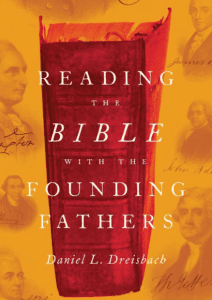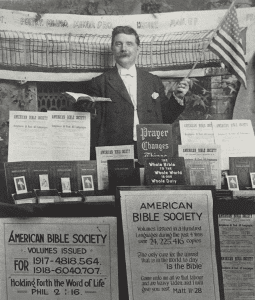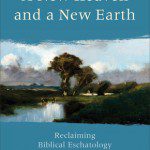For to us a child is born,to us a son is given, and the government will be on his shoulders. And he will be called Wonderful Counselor, Mighty God, Everlasting Father, Prince of Peace. Of the greatness of his government and peace there will be no end. He will reign on David’s throne and over his kingdom, establishing and upholding it with justice and righteousness from that time on and forever.
 I posted last week on Daniel Harrington’s essay in the new book by Marc Zvi Brettler (Brandeis University), Peter Enns (Eastern University) and Daniel J. Harrington (Boston College), The Bible and the Believer: How to Read the Bible Critically & Religiously. Harrington is a biblical scholar, Catholic priest and Jesuit. Today I would like to look at the Catholic view of the Old Testament.
I posted last week on Daniel Harrington’s essay in the new book by Marc Zvi Brettler (Brandeis University), Peter Enns (Eastern University) and Daniel J. Harrington (Boston College), The Bible and the Believer: How to Read the Bible Critically & Religiously. Harrington is a biblical scholar, Catholic priest and Jesuit. Today I would like to look at the Catholic view of the Old Testament.
First – the early Christians, including Peter, Paul, John, the evangelists, and the early church Fathers all looked at the Old Testament through the lens of Jesus the Christ.
[They] generally took the paschal mystery (Jesus’ life, death, resurrection, and their saving effects) as the key to interpreting the Old Testament. In this respect they were doing something like what the Jewish group that produced the Dead Sea Scrolls did when they wrote their commentaries (Pesharim) on obscure prophetic texts and psalms in the light of the history and ideology of their own community (probably Essene). (p. 96)
The early Christians looked at scripture as the word of God in a manner that aligned with the practice of their day. Pete Enns in Inspiration and Incarnation explores this in much detail. They viewed scripture as the inspired text of their past, present, and in some sense, future. But they did not view inspiration in the manner we, with modern eyes, tend to view the nature of inspiration.
The most important texts in the Old Testament are/were the prophetic passages. The early Christians were convinced (as most of us remain today) that these prophecies has been fulfilled in and through Jesus. This view shapes much of the Catholic approach to the Old Testament.
Against this background, it is fair to describe the primary Catholic approach to the Old Testament as proceeding “from promise to fulfillment” or “from shadows to reality.” The “promise” is to be found in the shadows of the Old Testament, and the “fulfillment” or “reality” in Christ as he is proclaimed in the New Testament. … While there are exceptions (especially during Lent), for the most part, it seems that in the lectionary the Old Testament passage has been chosen with an eye toward providing “background” for the Gospel text, and the responsorial psalm serves as a bridge between the Gospel and the Old Testament texts. (p. 97)
The idea of promise and fulfillment is important. The text from Isaiah 9:6-7 at the top of this post is a powerful example of promise and fulfillment celebrated especially at this time of year. But not all passages fit this mold. We can do violence to the text forcing passages into the mold, but more often we simply overlook the depth and message of scripture through the emphasis on the OT as a book of promise and fulfillment. Harrington notes this in his concluding section.
The Christological reading of the Old Testament is as old as Christianity itself, and it will not (and cannot) disappear. However, our appreciation for the Old Testament texts may be greatly enriched by taking them more seriously on their own merits rather than always forcing them into a promise and fulfillment theological schema. … Then perhaps we will see more clearly both the human and the divine significance of those texts for us, too. (p. 112)
Peter Enns in his response to the essay by Harrington comments on the promise fulfillment pattern imposed on the Old Testament. This pattern is not a uniquely Catholic reading by any means. It is pervasive within the Protestant church – and for very good reason. After all, the New Testament writers go to great length to situate Jesus within Israel’s history. “Jesus is the promised messiah who fulfills God’s redemptive mission.” (p. 115) The irony is in the creative way in which the New Testament writers pull the promise and fulfillment out of the Old Testament text. It is a typically Jewish midrash. “Therefore, promise/fulfillment, as presented by the New Testament authors in their engagement of the Old Testament, rests firmly in Jewish ways of reading.” (p. 115) Thus promise and fulfillment is both found within and read into the Old Testament.
The pattern of promise and fulfillment, while of undeniable importance in Christian thinking is not the only message of the Old Testament text. As we move through Advent and prepare to celebrate Christmas, it will do us well to consider the role promise and fulfillment plays in our understanding of Scripture. We may benefit from a broader reading of the mission of God as revealed in the Old Testament.
To what extent is the primary role of the Old Testament promise?
Is there more that we can and should find in reading the Old Testament?
If you wish to contact me directly you may do so at rjs4mail[at]att.net
If interested you can subscribe to a full text feed of my posts at Musings on Science and Theology.
Here is a good version of Handel’s Messiah For Unto Us a Child is Born, a fitting close to the post today.











